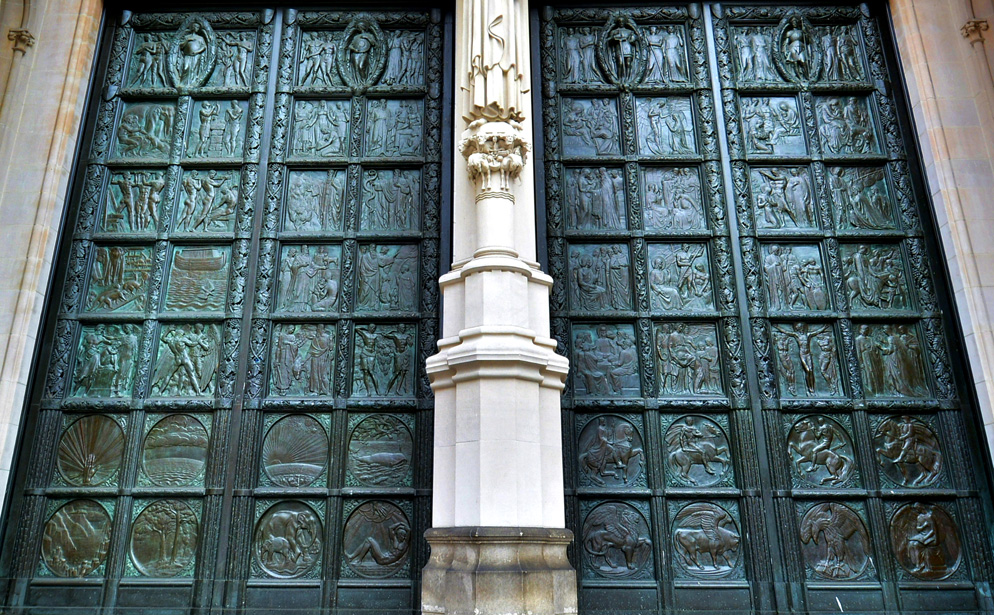Marketplace: D7100 HD-SLR
Raising the ante: A top-of-the-line performer
The 24.1-megapixel DX-sensor D7100, Nikon’s newest HD-SLR camera, sets a new standard in image quality and sharpness in the DX line. It’s a camera that doesn’t use an optical low-pass filter, which results in the sharpest, highest quality images the sensor is capable of delivering.
Since the introduction of Nikon’s first D-SLR, the D1, there’s been a piece of optical glass called an optical low-pass filter in front of the sensor on Nikon cameras. It’s there to eliminate or reduce the effect of moiré patterns, and if you’ve ever seen a TV newscaster wearing a shirt with pronounced stripes or a jacket with a herringbone pattern, you know what moiré can mean to digital capture and transmission. The optical low-pass filter prevents or reduces the moiré effect, but because of the D7100’s specific set of technological features—particularly its increased resolution and the capability of its dedicated sensor—the degree of moiré is reduced to the point that it’s of little or no consequence; and should an image pick up a pattern, Capture NX 2 offers a quick correction feature.
That’s big news, but it’s not the only news about the D7100, a camera designed to provide imaging power and quality to photo enthusiasts thinking of moving up from, say, D3000 or D5000 series cameras, or even a D300S.
The D7100 features the 51-point autofocus system of the D4 and D800; up to six-frames-per-second continuous frame advance at full resolution when shooting RAW or JPEG images; and in addition to the 1.5x DX crop mode, an additional mode: 1.3x crop for a little extra reach. Combine seven-frames-per-second advance with 1.3x crop mode and you can see why the D7100 is perfect for wildlife, nature and sports shooting. And with the 1.3x crop, the 51-point AF goes edge to edge, so you’ve got AF points in every part of the frame—which is ideal for action photography.
The camera is compatible with the WU-1a wireless mobile adapter so you can bring connectivity into the picture and transmit your images to a smartphone or tablet for instant e-mail sharing or uploading to the web. And with Nikon’s free Wireless Mobile Utility app, your smartphone or tablet becomes a live view monitor from which you can remotely fire the camera.
In one of the coolest ways technology can expand the range of possible images, in addition to the D7100’s three-stop autobracket feature, the camera offers a five-stop autobracket as well. Both can be set for standard +/-1 EV stops, and also for +/-2 and +/-3 stops for an enormous range of EV bracketing.
On the video side, the camera provides Full HD 1080p video and time-lapse capability, plus a built-in stereo microphone and a jack for an external stereo mic. There’s also a headphone jack so you can monitor the sound as you’re recording it, and you can check the sound by watching the peak level meters on the D7100’s LCD screen. You can output your recording to an external video recorder using the D7100’s HDMI port, or output the video to a monitor for live viewing as it’s being recorded.
To discover a camera that will inspire your creativity and imagination with its ability to capture images of incredible quality, check out the lightweight, compact D7100 at your local dealer.
Inside the D7100 $
-
24.1-megapixel DX-format CMOS sensor.
-
EXPEED 3 processing engine.
-
51-point autofocus.
-
ISO sensitivity 100 to 6400, with Hi-1 of 12,800 and Hi-2 of 25,600.
-
Continuous still images at six frames per second in DX mode; seven in 1.3x crop mode.
-
Full HD 1080p video at 50/60i and 24/25/30p.
-
Built-in two-shot HDR capability.
-
3.2-inch ultra-high-resolution 1,229K-dot LCD monitor.
-
Exposure compensation in +/-5 EV in increments of 1/3 or 1/2 EV.
-
Exposure bracketing in 1/3, 1/2, 2/3, 1, 2, or 3 EV stops.
-
Shutter speeds of 1/8000 second to 30 seconds in 1/3 or 1/2 EV, plus bulb.
-
Scene modes include candlelight, child, close-up, dusk/dawn, landscape, night landscape, night portrait, pet portrait, sports and sunset.
-
Picture controls include monochrome, vivid, neutral, portrait, plus customizable settings.
-
Dust-reduction image sensor cleaning system.
-
Durable magnesium alloy body with moisture and dust resistance.
The Reach of Remote Control $
To extend the capabilities and reach possible when photographers need to control their cameras remotely, Nikon has introduced the WR-1 Wireless Remote Controller, which uses radio frequencies to communicate instead of infrared signals, which require direct line of sight.
The WR-1, part of the Nikon Wireless Remote Control system, is operable up to 394 feet and can act as either a transmitter or a receiver unit. It is compatible with the WR-T10 transmitters and WR-R10 transceivers when Group A settings are used.








